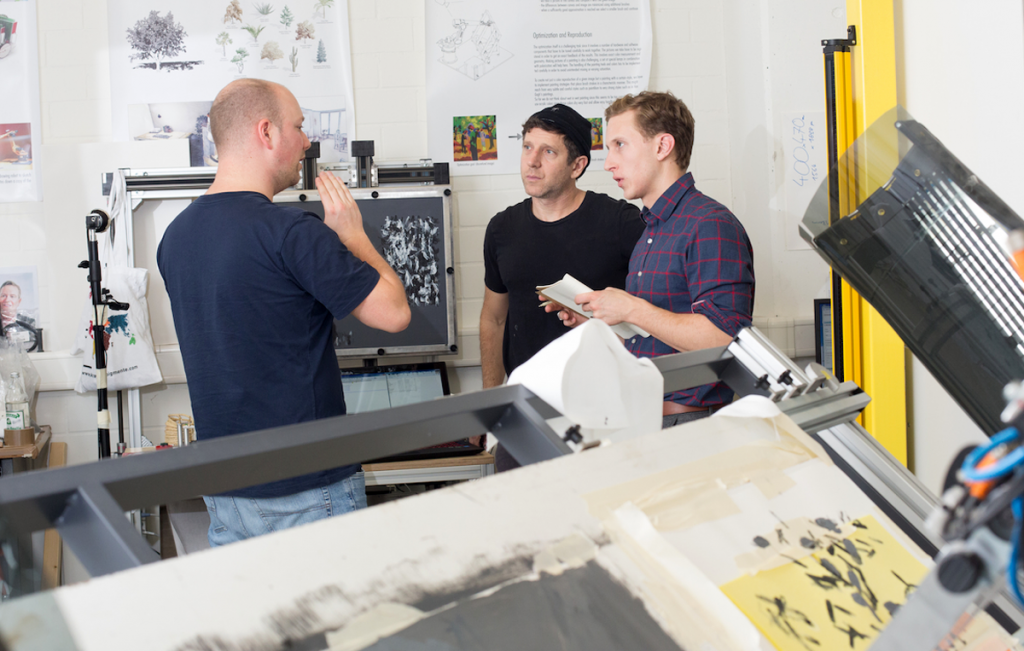In January a group of students from the Massachusetts Institute of Technology (MIT), Cambridge (USA), visited the Computer Graphics Group of the University of Konstanz (Prof. Deussen) to evaluate e-David, our painting robot. Together with Benjamin Tritt, a well known American Artist, they analyzed the different methods of painterly abstraction.

With e-David we want to mimic human artists and find out to which extent painting processes can be performed by machines. Part of our project is research on computational creativity: we want to research and develop methods in which the machine starts to develop its own painting strategies and styles. The machine should be able to learn from past paintings when producing new ones. Another important aspect is quantification of abstraction. We want to develop styles in which we can predict and maintain a wanted degree of abstraction, technically (number of strokes) and also perceptually.
The MIT students want to use the machine in a semi-automatic way and combine human and machine painting. Ideally the human would only direct the system by sketching and giving hints for the style to be used. Then the machine does the often cumbersome painting work. At the end the human finishes the artwork. The work of Benjamin Tritt combines classical painting styles with modern motives. He is interested in machine painting since large-scale artworks are very time-consuming and robots might be very helpful in creating intermediate painting layers.
Watch e-David paint in this video (Link will take you to Vimeo).
